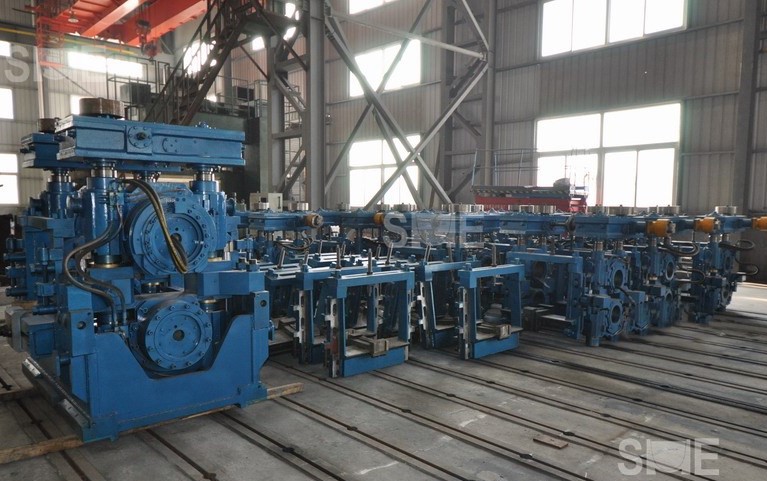In the continuous rolling process, there is differential metal flow rate two adjacent rolling mills, when the metal flow of the rear mill is greater than of the front mill, workpiece between two mills will be subject to pulling force the front mill, this force is usually called tension.
Tension acts on the workpiece and can reduce resistance of the workpiece along rolling direction, thus the flow of metal along the rolling direction will increase, the width size of the workpiece turns small and its length turns longer. Ultimately, that will make wast products which don’t have right width or length. In addition, that may cause pull-cut accident. How to accurately determine the size of the tension between the stands? Can refer to the following commonly used methods.
Observing workpiece state: when the workpiece tail widens at leaving the previous stand, it indicates that there is tension between the two stands, the tension disappears, the width of the rackworkpieces will become larger if the tension disappears. The change of the width is more larger, indicating that the tension is more bigger.
Knocking method: To tap the workpiece with a iron rod, observing or feeling the vibration of the workpiece. For small cross-sectional workpiece, you can observe the tension through plucking center point of the workpiece, when the rolling piece more easily with the height of the iron rod to change, indicating that the tension is small or free tension.
Observing current load: the size of the tension between stands can be directly judged by the change motor load current. When the first steel is bite in, the current value is marked“A", if the current value remains unchanged after the rolling piece is bites into the second stand, that saying without tension; when the current value changes less than" A" (or greater than" A") , it indicates that there is the tension to pull steel or push steel.
Loop type: the top of the loop is directly above roller, and the roller has not reached the set height, indicating that the loop is in a large tension state, forming a pull-steel rolling. At this time, the roller is held down by component force downward, thus the roller can not be raised to its place, if the tension is seriously large, the roller will drop with increasing tension.
The main method to adjust the tension is to adjust the speed of the mill, but the premise is to ensure that the height of workpieces in line with the process requirements, do not adjust the speed and roll gap at the meantime, that can be bound to cause confusion in the adjustment.
After the height of workpieces at each stand to be confirmed, you can use the mill speed to eliminate tension stand by stand. Adjustment of tension should first start from the first stand toward back in turns. If adjusting from the last stand, it is possible to make the tension relationship again to destroy, and cause accidents.
